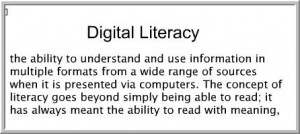This week’s symposium is about conclusion of the semester. Adrian and the tutors help us reviewed the whole semester together about things have been changed and the reasons why they are being changed. He look back at 8 years ago, then students were not doing the blogs, now everyone has their blog and established a community of networking. The technology is developing faster and faster and everything keeps changing. The society is like a big network, people all have their jobs, they live, they contribute to this big community. At this point, I can understand network in a deeper level.
This week’s symposium is related to cultural memory.
-three dimensions-material, social, mental
-material-youtube/social-people/mental-thinking
-collective memory brought up by Maurice halnwachs in 1920s
-connection of cultural and socio-cultural contexts
-Jeffrey K.Olick-two radically different culture concept over here, people’s subjective mind (individual) and patterns of publicly objectified in society(collective)
-biological memory (we remember in social context) and symbolic order (reconstruct a shared past)
-ways that technology may affect human experience
-technologies may have specific properties or characteristics that play a role in facilitating the occurrence of certain kinds of experiences, but irrelevant to social institutions and power
There are lots of forms of media like YouTube and Facebook in our life that archives the past, becomes part of cultural memory.
In today’s lab, we talked about the coming Mixed Media Creative Critical Essay. Elliot asked us to make a list of all kinds of creative ideas we could use for our essay. Here is our list.



In this week’s symposium, two topics are brought up. The first one was differences between print literacy and networked literacy. Although they are two kind of different literacy, they do not against each other. Print literacy refers to books, newspapers, novels, magazines and so on. people can actually read them from a piece of paper. It is the traditional way of consuming information and knowledge. When I am young, the computer and the entire electronic industry was not developed like today’s. People used to read stuff from papers. Now, the Internet has replaced all of these. People can get plenty of information from web pages, phones, laptops. Networked literacy has gradually replaced the printed literacy. However, people still use printed literacy. They are not against each other, and they can exist at the same time. Nevertheless, networked literacy has a larger platform of communication and a larger range of information than printed literacy. This will raise another topic today.
Since networked literacy have a large range of information, how do we recognize and tell its validity. There is various information on the Internet. Some of them is from official website with good authority, some of them is from experts’ opinion, some of them is a random guy’s blog, some of them is from a video draws plenty people’s attention. What should we trust in. How can we tell the reliability. Sometime we trust it wholeheartedly, but it turns out to be fake. We need to filter information from the Internet and try to use the ones with strong authorities.
Another point brought up in the lab was that the future of print literacy depends on if people continue using it from some degrees. People tend to use networked media more those days because it is faster, with more information, easier to communicate. However the networked media is developed from print literacy, the connection between these two is noticeable.
In addition, we prepared for the next week’s HTML test in the lab. I felt easy and confident to the HTML test. We generally went through the process of what we will do during the test. The software we need to download, the file we need to create, the test requirement. Later, Elliot sent us an e-mail of a walkthrough about preparing the test which was very helpful.

I read Caitlin’s Blog in this week’s tutorial. Her blog look really good. In the recent week, she wrote about the symposium and answered the question related to the reading wrote by Nelson.
In the response of the reading question, she explained based on her own experience and understanding of the social media. Also she made some assumptions about the further development of the social media. I thought she did some critical thinking about the stuff in the reading and prove her own idea very clearly. About the symposium, she posted few questions about and explained it using some daily examples including the validity of information on the internet and how we can judge it, the differences between print literacy and network literacy and so on.
In general, they are great blogs and very interesting to read. the content is very specifically analyzed and given plenty of examples.
three colleagues I linked to
http://www.mediafactory.org.au/caitlin-hughes/
http://www.mediafactory.org.au/louisa-keck/
http://www.mediafactory.org.au/jamie-cilia/
Digital literacy is the ability to learn, evaluate, understand, analysis and organize the information by using technology tools like computers. Also we need to have a critical attitude about the sources we found on the Internet and try to analysis and evaluate the reliability of the sources we found.








